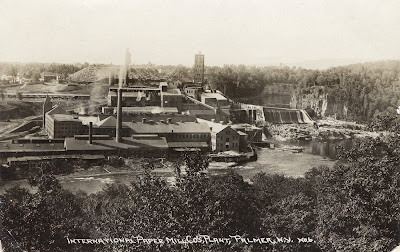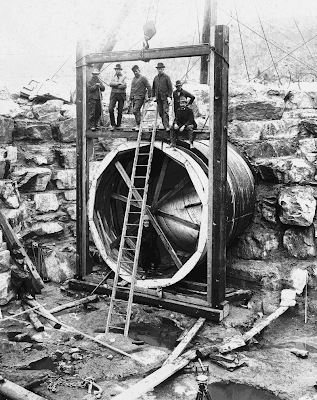 April 2011 marked the 200th anniversary of the key decisions for the construction of the Erie Canal, a monumental public works project that transformed the economy of New York State.
April 2011 marked the 200th anniversary of the key decisions for the construction of the Erie Canal, a monumental public works project that transformed the economy of New York State.
Two centuries ago, on April 8, 1811, the state Legislature approved a measure that set into motion the construction of the Erie Canal. This followed the delivery of a report on March 2, 2011 of a report by the original Commission.
The 363-mile-long Erie Canal corridor offers numerous opportunities for shippers, boaters, bicyclists and walkers. The canal-side venues are the scenes of dozens of festivals, fairs and community events throughout the year.
In addition to its traditional role as a transportation corridor, the Canal system serves critical Upstate needs for hydropower, drinking water, irrigation and flood control.
The inter-agency Mohawk-Erie Corridor Study is examining how sustainable transportation assets can promote economic growth in Upstate New York.
The original Canal Commission was comprised of some of the most distinguished citizens of New York: Stephen Van Rensselaer, Gouverneur Morris, DeWitt Clinton, Simeon DeWitt, William North, Thomas Eddy and Peter R. Porter.
It had been directed by the Legislature in 1810 to conduct a survey across New York to examine possible routes for the canal. The Canal Commission suggested that such a canal not only could, but should, be built by New Yorkers to link the Great Lakes with the Atlantic seaboard.
The suggestion that a canal be constructed � miles through the wilderness” of upstate New York had been described by President Thomas Jefferson as “a little short of madness.” Still, the Canal Commissioners had concluded that it was not only possible, but that the benefits to New York, and the nation, would be enormous.
However audacious the plan, the Commissioners’ report accurately predicted that the benefits would far outweigh the costs, whatever the price: “Thus, were it (by giving a loose to fancy) extended to fifty millions of dollars, even that enormous sum does not exceed half the value of what, in all human probability, and at no distant period, will annually be carried along the Canal.”
When the Legislature adopted the Commission report, it appropriated $15,000 for the Commission to continue its work and added two more distinguished members Robert L. Livingston and Robert Fulton.
The New York State Canal System is comprised of four historic waterways, the Erie, the Champlain, the Oswego and the Cayuga-Seneca Canals. Spanning 524 miles across New York State, the waterway links the Hudson River, Lake Champlain, Lake Ontario, the Finger Lakes and the Niagara River with communities rich in history and culture. For more information regarding events, recreational and vacation opportunities along the Canal System, please visit www.canals.ny.gov or call 1-800-4CANAL4.
The New York State Canal Corporation is a subsidiary of the New York State Thruway Authority. State legislation in 1992 transferred the Canal System from the New York State Department of Transportation to the Thruway Authority. Canal operating and maintenance activities are supported by Thruway toll revenues.
The New York State Thruway Authority/Canal Corporation offers a free email service called TRANSalert to its customers via email or text messaging to inform them of major incidents and emergencies that may affect travel on the Thruway or navigation on the Canal System. To sign up for the Canal TRANSalert service, visit the website.
 A guided driving tour of historic dam sites on the Hudson River, organized by the Chapman Historical Museum, will take place on Saturday, August 13, from 9 am to 1 pm. The tour, which will be lead by Jeanne Williams, will include stops in Schuylerville, Mechanicville, Cohoes and Troy. Participants will learn about Victory Mills, the Mechanicville hydroelectric dam built in 1898, the great falls at Cohoes and the Burden Iron Works on the Poestenkill.
A guided driving tour of historic dam sites on the Hudson River, organized by the Chapman Historical Museum, will take place on Saturday, August 13, from 9 am to 1 pm. The tour, which will be lead by Jeanne Williams, will include stops in Schuylerville, Mechanicville, Cohoes and Troy. Participants will learn about Victory Mills, the Mechanicville hydroelectric dam built in 1898, the great falls at Cohoes and the Burden Iron Works on the Poestenkill.







